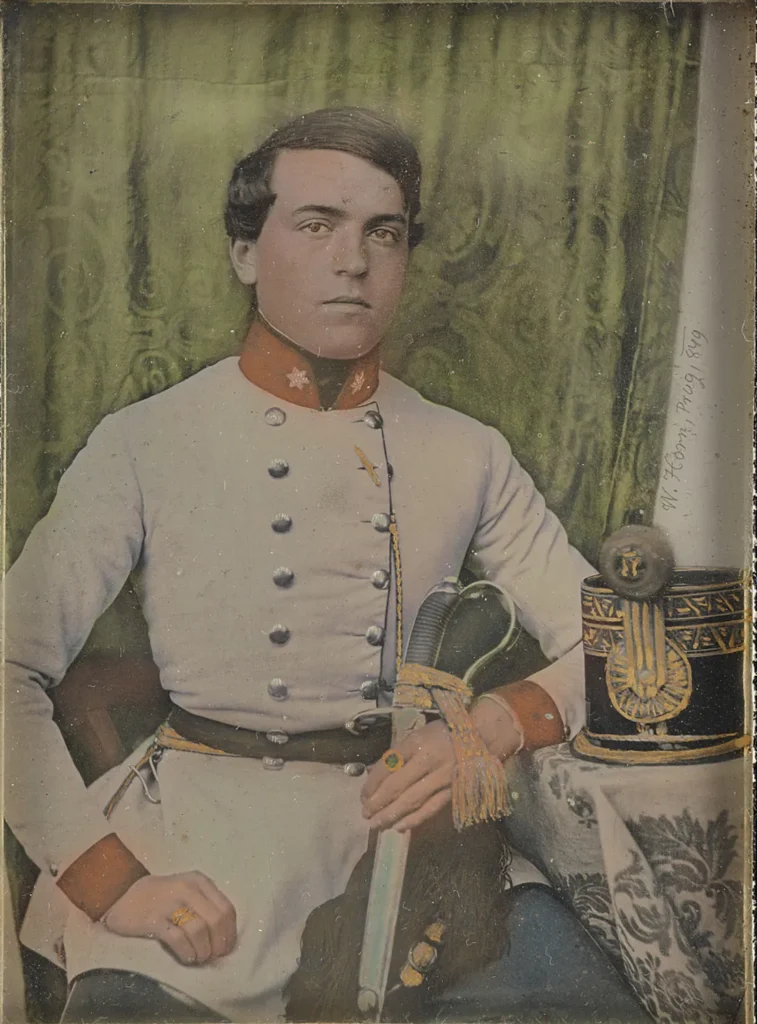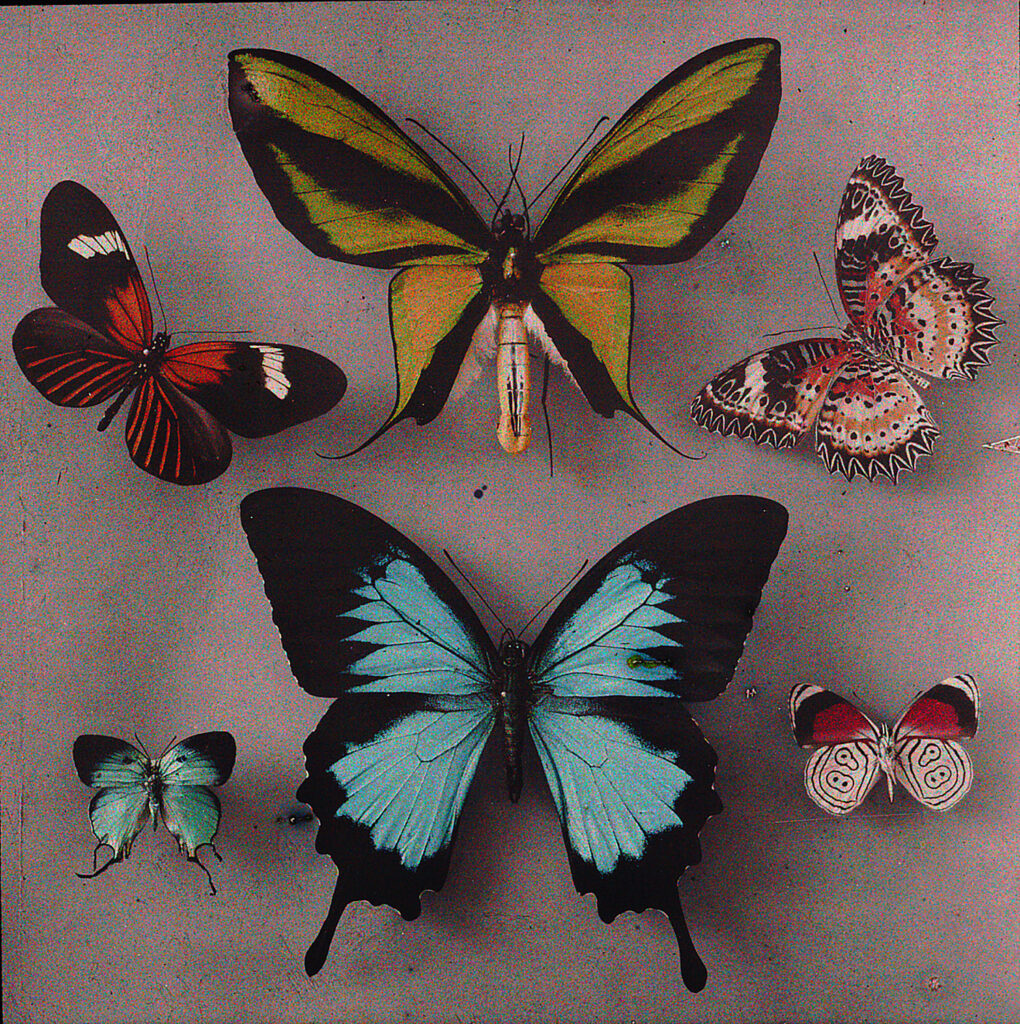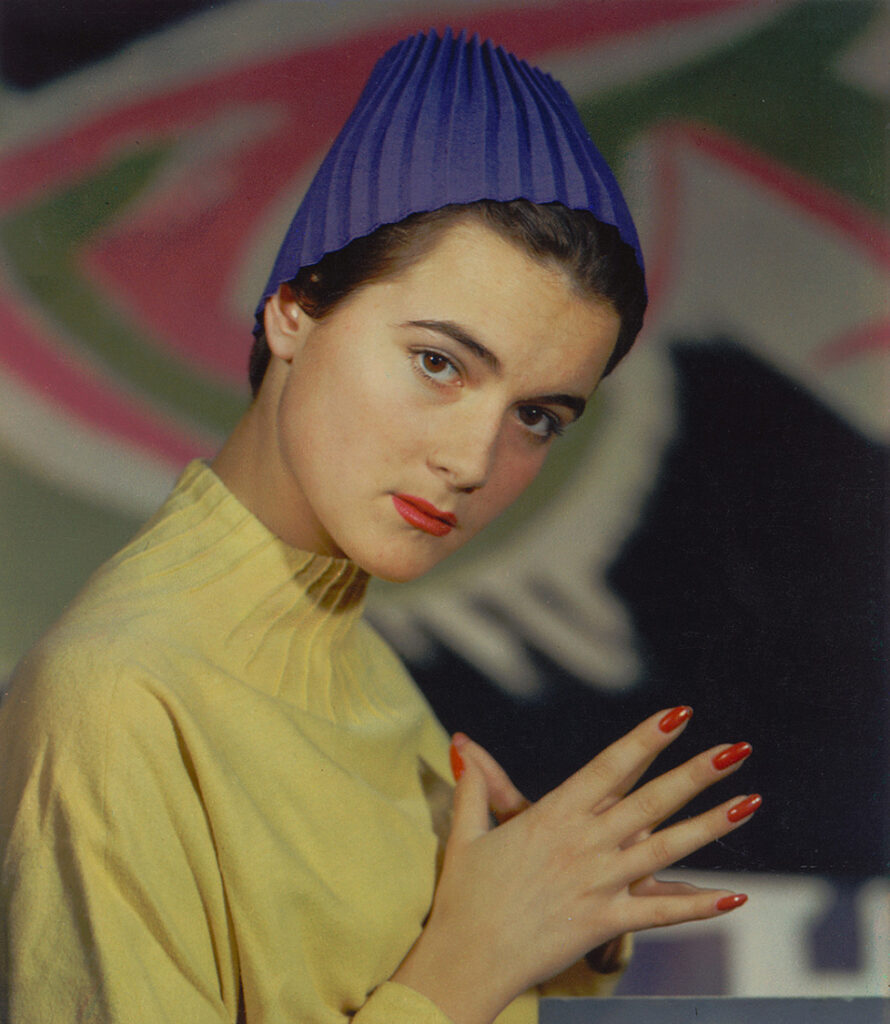The beginnings of colour photography
The first attempts to introduce colour into photography date back to the middle of the 19th century. At that time, it was a technical challenge to capture true-to-life colour images permanently. Scientists such as Edmond Becquerel and Claude Félix Abel Niépce de Saint-Victor experimented with light-sensitive substances, but the processes remained complicated and impractical. It was only with the introduction of the interference colour process by Gabriel Lippmann in 1891 that an important milestone was reached. The process produced brilliant colour images, but was so complex that it could only be used by specialists. At the same time, alternative processes were being developed to integrate colour into photography.

ALBERTINA, Vienna, on permanent loan from the Höhere Graphische Bundes-
Teaching and Research Institute, © Photo: ALBERTINA, Vienna
The breakthrough with Autochrom
The development of the autochrome plate by the Lumière brothers in 1907 was a real revolution. For the first time, it was possible to produce colour images with a single exposure that did not require any complex post-processing. The technique was based on tiny coloured starch particles that acted as filters and made a natural colour image possible. Autochromes quickly became popular and were widely used in art and travel photography. However, one disadvantage remained: the images were glass slides that could only be viewed in transmitted light. Despite this limitation, they contributed significantly to the further development of colour photography and paved the way for later printing processes, which also made colour paper prints possible.

On permanent loan from the Höhere Graphische Bundes- Lehr- und
Research Institute, © Photo: ALBERTINA, Vienna
Technological progress and industrial application
With the growing interest in colour photography, further processes were developed to transfer colour images onto paper. Intensive research into new techniques was carried out in Austria in particular. Scientists such as Josef Maria Eder, Eduard Valenta and Arthur von Hübl worked on improvements to make colour photography more suitable for everyday use. In the 1930s, Kodak finally achieved the decisive breakthrough with the first 35mm colour slide films. This new technology made it possible to establish colour photography on the mass market. During the Second World War, distribution was initially limited, but in the post-war period, colour film finally became established worldwide.

ALBERTINA, Vienna,
On permanent loan from the Höhere Graphische Bundes-Lehr- und Versuchsanstalt,
© Photo: ALBERTINA, Vienna
From the pioneers to modern colour photography
The development of colour photography was a long journey, marked by experiments, setbacks and technical innovations. What was once reserved for just a few specialists gradually became accessible thanks to pioneering processes. Today, colour is taken for granted in photography – but the history behind it often goes unnoticed. The book True Colors sheds light on this change and shows how researchers, photographers and technicians have worked for decades to achieve perfect colour reproduction and the challenges they had to overcome in the process.
Data
| Original title | True Colors – Farbe in der Fotografie von 1849 bis 1955 |
| Translation | True Colors – Colour in photography from 1849 to 1955 |
| Editor | Anna Hanreich, Astrid Mahler |
| Publisher | Hirmer Verlag |
| Cover | Half linen |
| Pages | 200 pages, 170 illustrations |
| Language | German, English |
| Dimensions | 22 × 28 cm |
| ISBN | 978-3-7774-4533-5 |
| Price | 49,90 € |
Further information
Further information on the book True Colors – Farbe in der Fotografie von 1849 bis 1955 (Advertising) can be found on the website of Deutscher Kunstverlag.
Compliance
The book was kindly made available to us by the publisher. The presentation and rating of HYPERMADE remains independent of this and is based solely on the content of the book.







